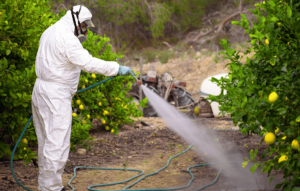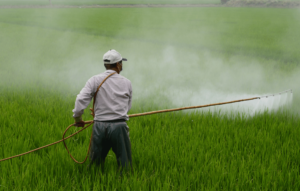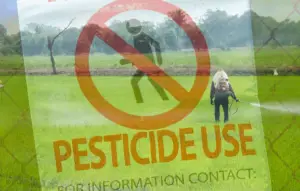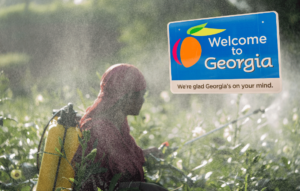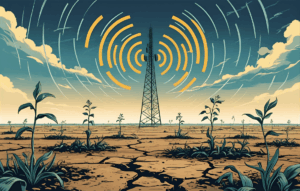Most people associate golf courses with peace, luxury, and lush landscaping. But what if these picturesque greens are hiding something far more dangerous? According to a groundbreaking new study published in JAMA, individuals living within one mile of a golf course face a 126% higher risk of developing Parkinson’s disease compared to those living more than six miles away.
Let that sink in for a moment.
It’s not just about living near pesticides. This study, conducted by a multidisciplinary team from the Mayo Clinic, University of Rochester, and others, raises urgent questions about our drinking water, airborne chemical exposure, and the oversight (or lack thereof) by agencies like the EPA and FDA.
Understanding Parkinson’s Disease and Environmental Triggers
Parkinson’s Disease (PD) is a progressive neurodegenerative disorder marked by tremors, stiffness, and slowed movement. It’s the second most common neurological disorder after Alzheimer’s, and its prevalence is on the rise. Alarmingly, only about 15% of cases are linked to genetics, meaning the other 85% are likely driven by environmental factors.
The Pesticide Problem
Among those environmental contributors, pesticide exposure has long been a suspect. Paraquat, a banned pesticide on golf courses but still widely used in agriculture, is a well-documented neurotoxin. But even chemicals still legally applied to maintain the perfect green—like 2,4-D, chlorpyrifos, maneb, and organochlorines—have ties to Parkinson’s and other neurodegenerative diseases.
This isn’t new. Studies have shown that just drinking well water in agricultural regions increases PD risk. Add in the aesthetic obsession with manicured golf courses, and we’ve inadvertently built pesticide hot zones right in our backyards.
The JAMA Study: A Closer Look at the Data
This 2025 study was led by researchers at the University of Rochester Medical Center, University of Kansas Medical Center, Barrow Neurological Institute, and Mayo Clinic. One key author, Dr. Ray Dorsey, is well known for his work on paraquat and its effects on neurological health.
Type: Population-based case-control study
Participants: 419 Parkinson’s patients and 5,113 matched controls from the Rochester Epidemiology Project (1991–2015)
Geographic Focus: 27 counties in southern Minnesota and western Wisconsin
Exposure Metrics: Proximity to 139 golf courses, water service area data, municipal well locations, and groundwater vulnerability
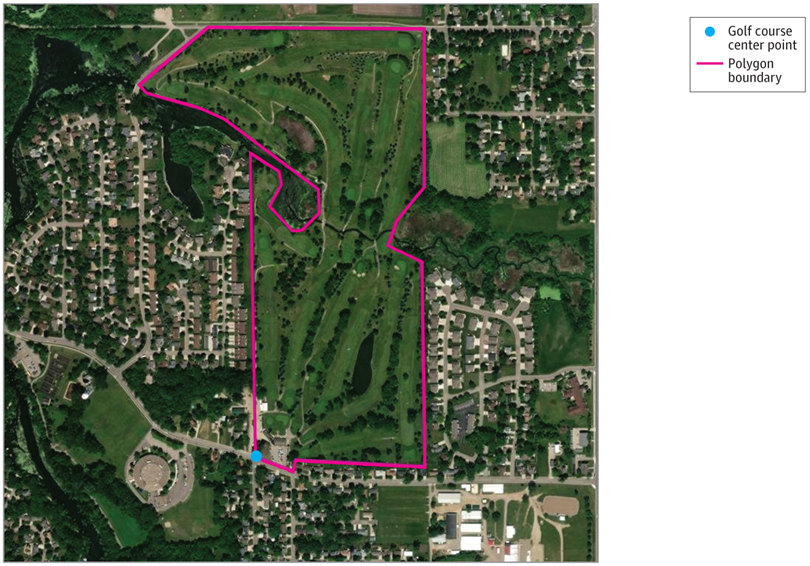
What the Study Found
After adjusting for patient demographics and neighborhood characteristics, the researchers found:
Living within 1 mile of a golf course increased the odds of developing Parkinson’s disease by 126% compared to individuals living more than 6 miles away.
Individuals in water service areas with a golf course had nearly double the odds of developing Parkinson’s.
Those in vulnerable groundwater regions with golf course exposure had an 82% increased risk.
For each mile farther from a golf course beyond the 3-mile mark, Parkinson’s odds decreased by 13%.
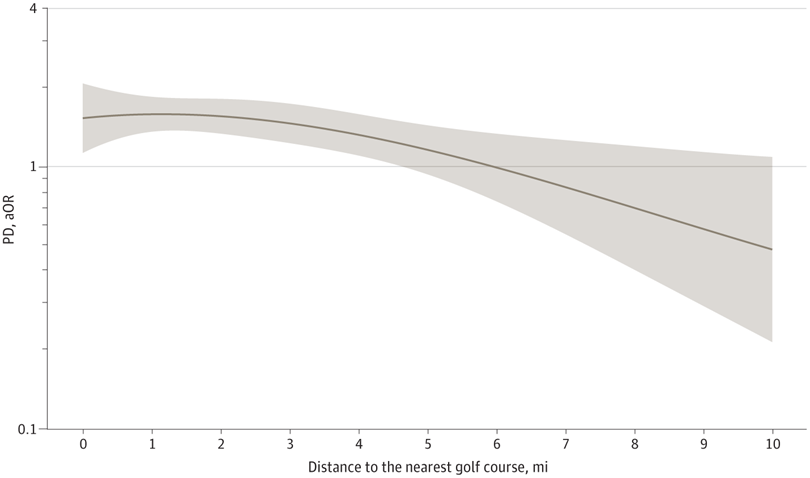
The study also suggested multiple routes of exposure, including groundwater contamination and potential airborne drift of pesticide chemicals, particularly in urban settings.
This isn’t isolated. Prior studies have shown pesticides like chlorpyrifos and 2,4-D leaching into groundwater on golf courses at levels far beyond health safety thresholds—sometimes over 200 times the recommended level. With over three-quarters of this study’s participants relying on groundwater for drinking, these findings raise serious public health concerns.
The Bigger Picture: Why We Must Change Course
The quest for the perfect green shouldn’t come at the cost of public health. Golf courses are not inherently evil, but the chemicals used to maintain them and the lack of accountability pose a silent yet serious threat.
With rates of neurodegenerative diseases skyrocketing and scientific evidence stacking up, the time to act is now. We can’t rely on regulatory agencies alone. As citizens, communities, and health advocates, we must demand transparency, cleaner practices, and accountability.
This isn’t just about golf.
It’s about redefining what we call “normal” in land management, what we allow in our water, and what we’re willing to risk for aesthetics.
RFK Jr., MAHA, and the Fight for Regenerative Health
The pesticide problem doesn’t end at the golf course fence line. In fact, it intersects with nearly every facet of American health, agriculture, and politics, and few figures are tackling it more directly than Robert F. Kennedy Jr.
The Battle on Multiple Fronts
If anyone understands how deep this rabbit hole goes, it’s Robert F. Kennedy Jr. As head of the Make America Healthy Again (MAHA) Commission under the Trump administration, RFK Jr. has been tasked with addressing some of the most complex and entrenched issues in modern American health—ranging from pesticides and chronic disease to food additives, electromagnetic radiation, and regulatory capture.
The recent MAHA report, expected to highlight glyphosate (the active ingredient in Roundup) as a top offender, positions Kennedy at the center of a storm that spans environmental health, agriculture, and politics. White House adviser Calley Means has made the Commission’s stance clear: America’s chemical and food exposure problem is a driving force behind the chronic disease epidemic.
Pesticides, Processed Foods, and a Broken System
While RFK Jr. has assured farmers that he’s not seeking to dismantle their livelihoods overnight—acknowledging that “100% of corn in this country relies on glyphosate”—there’s no denying that industrialized farming is a system in need of radical change.
In my view, it’s not just that pesticides need to go. It’s the entire model of monocropping, over-tilling, and chemical dependence that needs to be replaced. Our soils are dead. Our food is nutrient-depleted. And our health is paying the price.
Decades of conventional agriculture have left us with food that’s genetically modified, pesticide-laden, and substantially less nutritious with each passing generation. We need to restore real food through regenerative organic farming, not just swap one herbicide for another.
From Glyphosate to Regeneration
Reports from Bloomberg show that farmers like Rick Clark are already proving that large-scale regenerative agriculture is not only possible—it’s thriving. Clark’s Indiana operation is fully organic and chemical-free, and he’s not alone.
With RFK Jr. providing a national platform for these conversations, there’s hope that regenerative organic farming may become the future, not just a niche.
But it won’t be easy.
Between federal defunding of organic programs and lawsuits like the one filed by Earthjustice over the USDA’s deletion of climate-smart farming data, small regenerative farmers are being squeezed. Even the regenerative agriculture movement isn’t immune to being hijacked by Big Ag, just like we’ve seen with the USDA Organic label.
The Bigger Ecosystem Collapse
Let’s not forget: pesticides don’t just harm humans. Insects, bees, and entire ecosystems are collapsing. As entomologist Dr. Brian Brown told RFK Jr. on The Defender Podcast back in 2022, “Insects are responsible for pollinating our food crops… They help provide us with clean air, water, food—all the things we take for granted”.
Pesticides and habitat loss are the top reasons for insect decline. And when insects go, so does biodiversity. So does food security.
Detoxing Glyphosate with Biome Medic
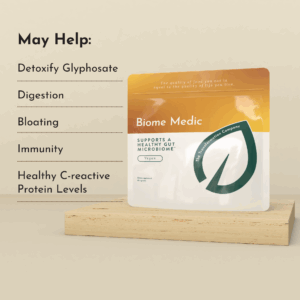 Glyphosate exposure is nearly unavoidable in today’s food system, but that doesn’t mean we’re powerless. Biome Medic, a natural gut support supplement developed by Purium, has been clinically shown to reduce glyphosate levels in the body and help restore gut microbiome balance.
Glyphosate exposure is nearly unavoidable in today’s food system, but that doesn’t mean we’re powerless. Biome Medic, a natural gut support supplement developed by Purium, has been clinically shown to reduce glyphosate levels in the body and help restore gut microbiome balance.
In a third-party, double-blind human study, Biome Medic reduced glyphosate by up to 74% in just six weeks. It contains key ingredients like prebiotics, probiotics, and fulvic acid that support detoxification and gut integrity—an essential defense against the chronic inflammation and leaky gut often linked to chemical exposure.
If you’ve been exposed to conventionally grown foods (like 99.9% of the population) or live near chemically treated landscapes like golf courses, Biome Medic is one proactive step toward restoring your internal terrain. Think of it as regeneration from the inside out.
Final Thoughts
Living near a golf course might seem like a luxury. But if you care about brain health, clean water, and protecting future generations from avoidable disease—then it’s time to ask: What are we really paying for?
Parkinson’s doesn’t show up overnight. It builds slowly, silently, often over decades of exposure. The science is clear, and now the responsibility is ours.
Whether it’s weedkiller in your backyard, chemical drift from a golf course, or a USDA that bends over backward for Monsanto and Syngenta lobbyists, one thing’s clear: the system is broken.
The future of health starts with what’s under our feet. Clean air, pure water, and nutrient-rich soil aren’t luxuries—they’re the foundation. And restoring them means more than just awareness—it means action. Shake your farmer’s hand. Support local, regenerative organic growers who are healing the land with every harvest. Filter your water. Prioritize real food. Reconnect with the rhythms of nature. Because the more we protect the soil, the more we protect ourselves—our brain, our children, and yes, even our frequency.




